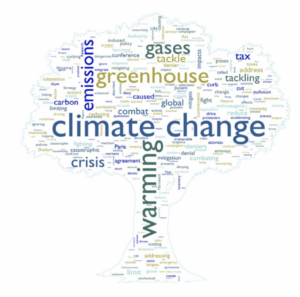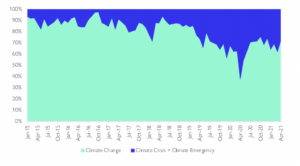Introduction
Sustainability is no longer a niche concern but a crucial aspect of modern business practices. In the European Union, the Sustainable Finance Disclosure Regulation (SFDR) is playing a significant role in driving sustainable investments by increasing transparency and standardisation. As financial institutions gear up for SFDR implementation, they face various data challenges that require careful navigation. The SFDR has already reshaped the landscape of sustainable finance. As asset managers offering sustainable financial products in the EU market gear up for SFDR Principal Adverse Impact (PAI) statements reporting by 30th June, they must navigate a complex web of data challenges to meet regulatory requirements effectively. In this article, we explore the intricate implications of SFDR for asset managers globally, highlighting the data hurdles they must overcome to seize the opportunities presented by sustainable investing.
Understanding SFDR
The SFDR aims to promote sustainability within the financial sector by providing investors with reliable and comparable information on environmental, social, and governance (ESG) factors. It introduces mandatory ESG-related disclosure obligations for financial market participants, including asset managers, investment advisors, and insurance companies. SFDR classifies financial products into three levels, each with different disclosure requirements: Article 6, Article 8, and Article 9. These levels help investors identify and understand the sustainability characteristics of investment products.
Navigating Data Challenges
One of the primary challenges for SFDR implementation lies in the availability and quality of ESG data. Financial institutions must source relevant ESG data to assess the sustainability characteristics of their products accurately. However, ESG data can be diverse, unstructured, and fragmented. SFDR implementation necessitates addressing several data challenges, ranging from availability and quality to standardization and reporting. This makes it difficult for organizations to compare and assess ESG data consistently. The SFDR has made efforts to address this challenge by mandating the use of various ESG disclosure standards and sustainability benchmarks. However, organizations still need to invest in data mapping, classification, and taxonomy development to align their data with SFDR requirements and enhance comparability across products and markets.
Asset managers must establish robust data collection mechanisms, collaborate with data providers, and invest in data management systems to ensure accurate and reliable ESG data. Seamless integration of ESG data into existing reporting frameworks, supported by efficient data governance practices, is vital for generating accurate and comprehensive reports. Lastly, asset managers need to stay abreast of regulatory changes and adapt their data management processes to remain compliant as the ESG landscape evolves.
Differentiation and Competitive Advantage
SFDR implementation offers asset managers an opportunity to differentiate themselves in the marketplace. By effectively communicating their sustainable investment strategies and demonstrating robust ESG integration, asset managers can attract environmentally and socially conscious investors. Meeting SFDR data challenges positions asset managers as leaders in the sustainable finance space, providing them with a competitive edge.
Enhanced Risk Management and Informed Decision-Making
SFDR implementation compels asset managers to deepen their understanding of ESG risks and opportunities. By collecting, analysing, and integrating ESG data, asset managers gain valuable insights into the sustainability performance of companies and industries. This empowers them to identify potential risks, assess the long-term viability of investments, and make more informed decisions, enhancing risk management practices and generating sustainable financial returns for their clients.
SFDR compliance also necessitates the integration of ESG data into existing reporting frameworks. Financial institutions must ensure seamless data integration across multiple systems and platforms to generate accurate and comprehensive reports. This requires efficient data governance practices, data consolidation, and the development of automated reporting processes. Furthermore, organizations must also consider the ongoing nature of SFDR reporting and establish mechanisms to update and maintain ESG data regularly.
Collaboration and Innovation
SFDR implementation encourages asset managers to collaborate with ESG data providers, rating agencies, and sustainability experts. These partnerships facilitate access to high-quality ESG data, improve data accuracy and consistency, and drive innovation in sustainable finance. The ESG landscape is dynamic, with evolving regulations, new reporting requirements, and emerging sustainability standards. Engaging with the wider ESG ecosystem enables asset managers to leverage expertise, enhancing their ESG data capabilities and staying ahead of market trends.
Cultural Shift towards Sustainability
SFDR implementation necessitates a cultural shift within asset management organizations. It requires a cross-functional approach, involving investment teams, data scientists, compliance officers, and senior management. By fostering a culture that values sustainability and integrating ESG considerations throughout the investment process, asset managers can develop new strategies, products, and services that align with sustainable objectives. This shift strengthens the overall resilience and long-term success of asset management firms.
Conclusion
As financial institutions embrace SFDR implementation, they face several data challenges that need to be effectively managed. From ensuring data availability and quality to standardization, integration, and staying up-to-dare with regulatory changes, organizations must invest in robust data management practices. By addressing these challenges head-on, financial institutions can navigate SFDR reporting more successfully, foster transparency, and drive sustainable investment decisions. Embracing data as a strategic asset will not only enable compliance but also unlock opportunities for improved decision-making and long-term sustainability.
Learn more about how ESG Book’s SFDR Data Solutions can help meet your reporting needs.




